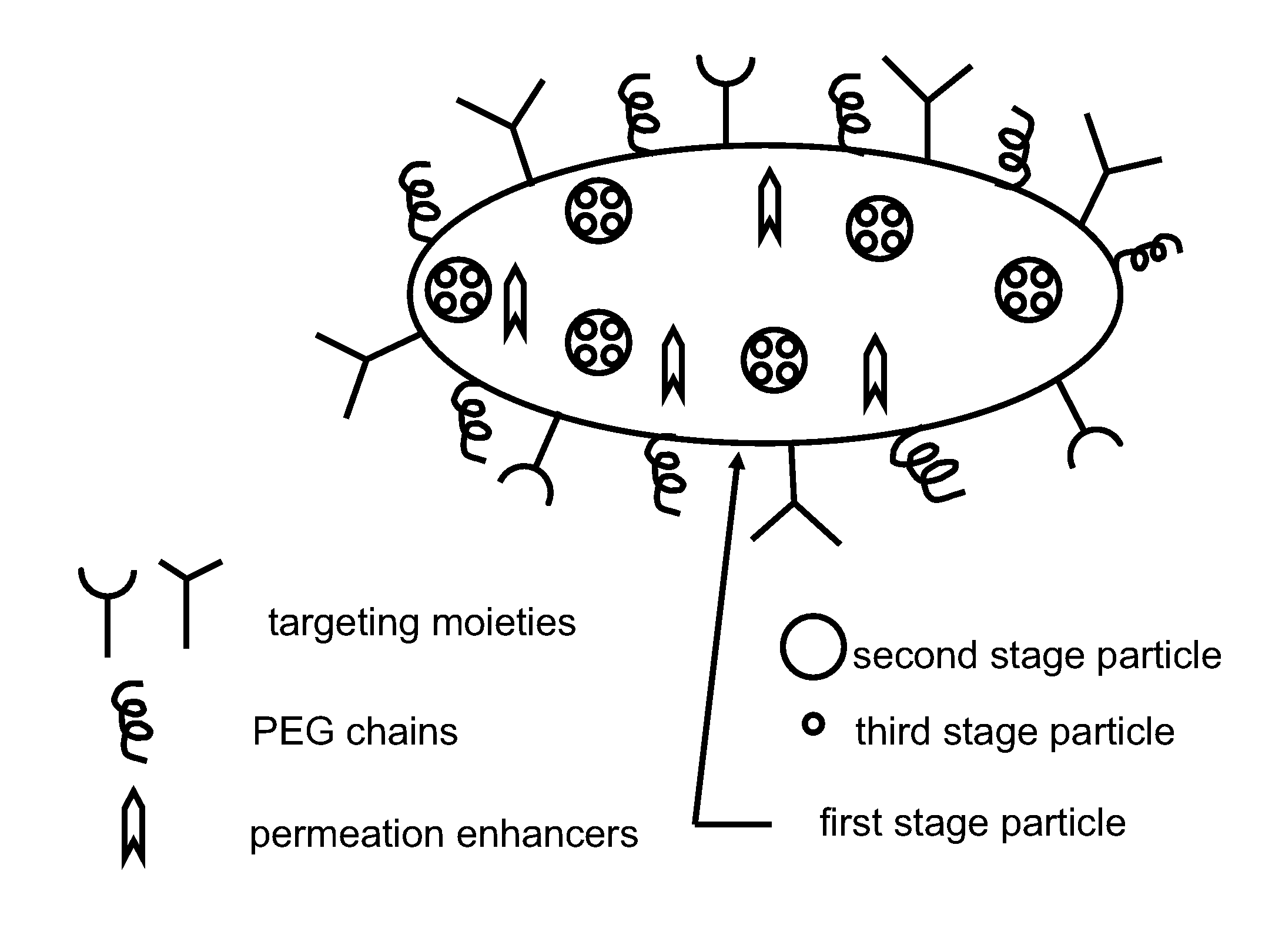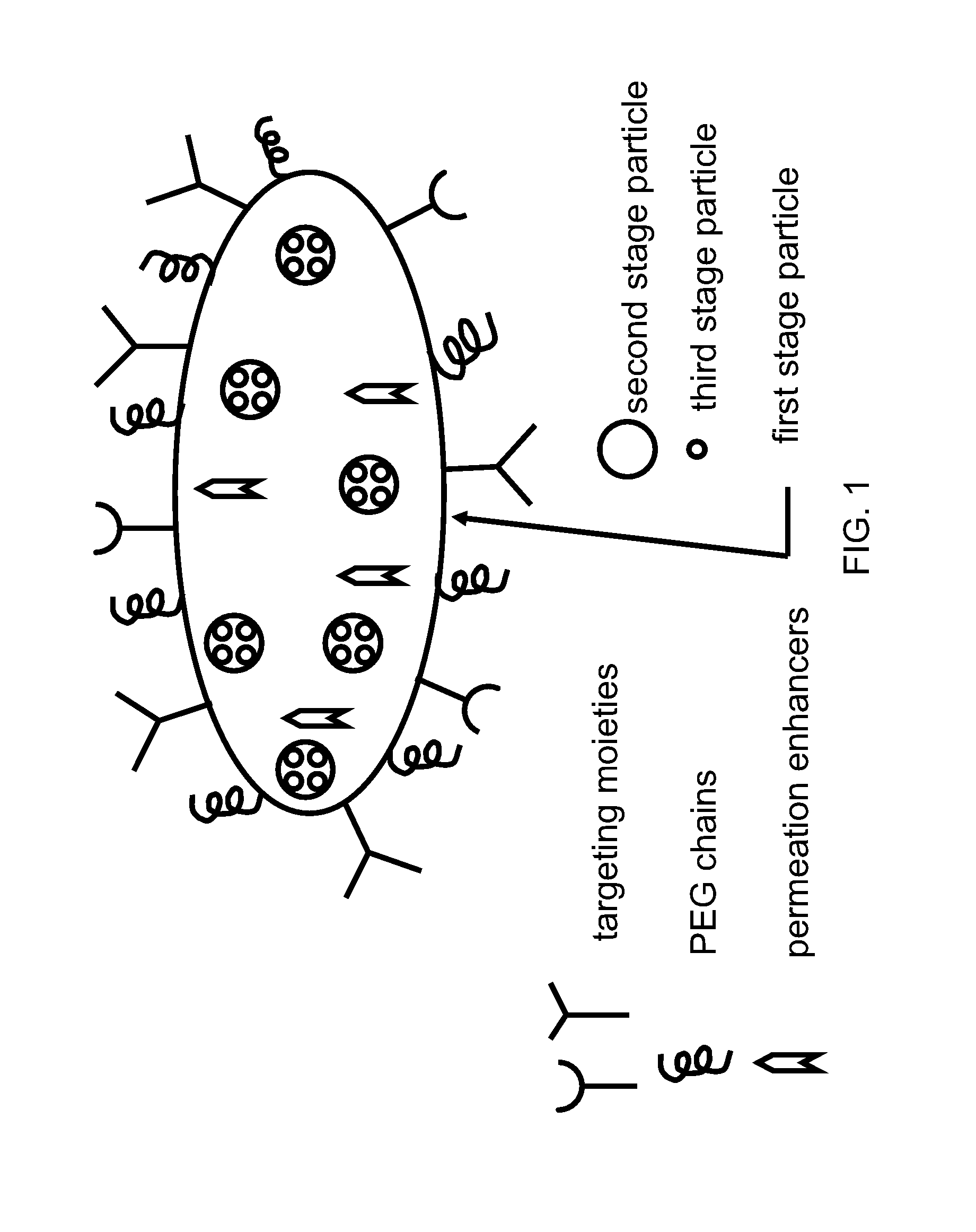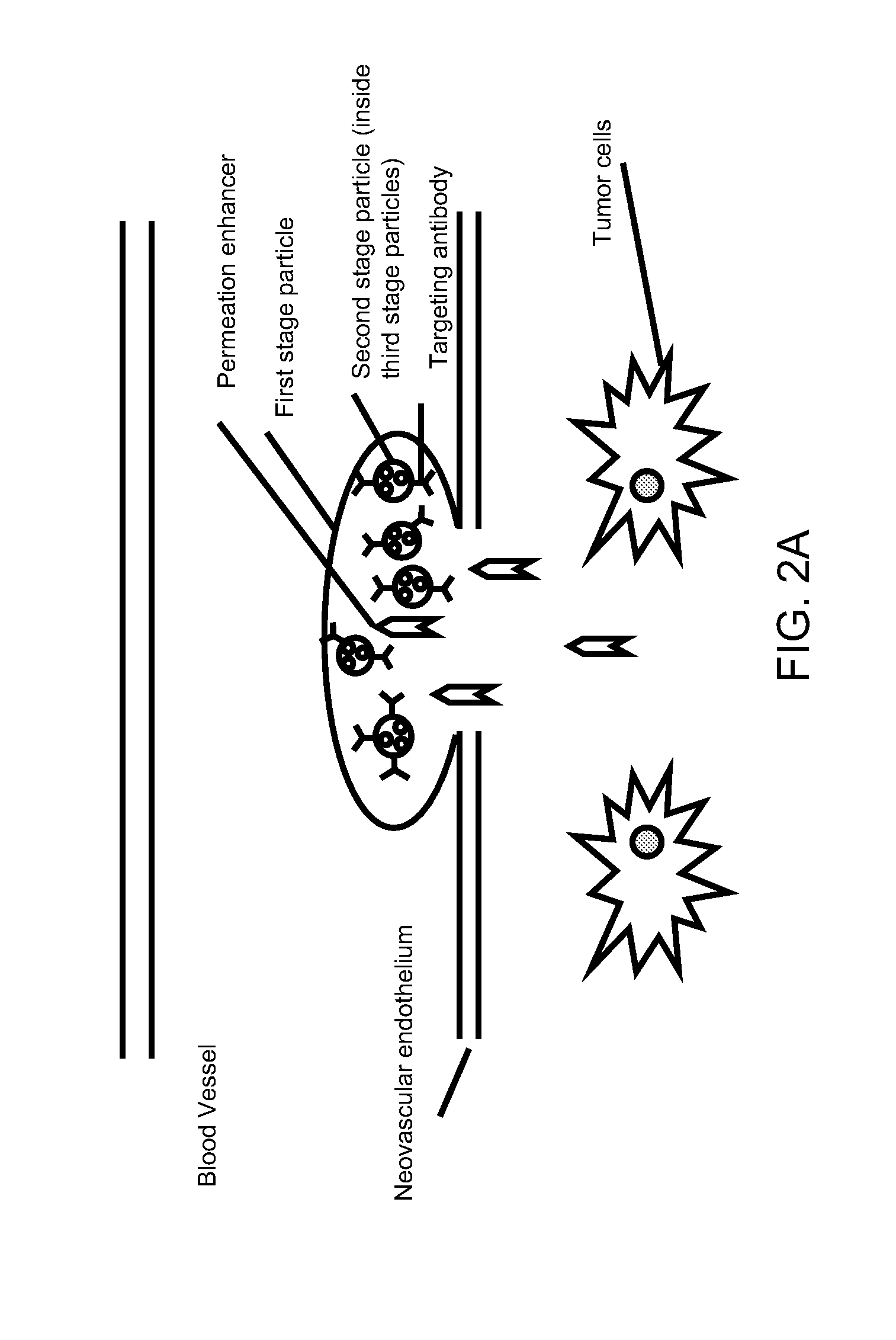Multistage delivery of active agents
- Summary
- Abstract
- Description
- Claims
- Application Information
AI Technical Summary
Problems solved by technology
Method used
Image
Examples
working example 1
[0137]The following experiments were conducted to study loading and release of selected second stage particles into nanoporous silicon first stage microparticles. Biodegradation and biocompatibility of the nanoporous silicon first stage particles was also studied.
Materials and Methods
Z2 Analysis
[0138]Particles were counted in a Z2 Coulter® Particle Counter and Size Analyzer (Beckman Coulter). The aperture size used for particle analysis was 50 μm. The lower and upper size limits for analysis were set at 1.8 and 3.6 μm. For analysis, particles were suspended in the balanced electrolyte solution of the instrument (ISOTON® II Diluent) and counted. The total volume of original suspension of particles did not exceed 0.3% of the final analysis volume.
Oxidation of Silicon Microparticles
[0139]Silicon microparticles in IPA were dried in a glass beaker kept on a hot plate (80-90° C.). Silicon particles were oxidized in piranha (1 volume H2O2 and 2 volumes of H2SO4). The particles sonicated af...
working example 2
[0216]A multi-stage delivery system based on biodegradable silicon particles containing nanopores of specific size as first stage carriers that may load, carry, release and deliver into cells multiple types of nanoparticles with a precise control was developed. The first stage silicon nanoporous particles may be simultaneously loaded with different types of second stage nanoparticles, which are released in a sustained fashion over time. The major physical, chemical, and electrostatic mechanisms that control the loading and release of second stage nanoparticles were defined. Finally, it was shown that the porous silicon carriers are able to locally delivery the second stage nanoparticles into the cytoplasm. Taken together, these studies provide evidence that silicon nanoporous particles may be used as cargoes for the simultaneous deliver of different types of nanovectors into cells. This system may offer unprecedented methods to achieve intracellular delivery of multiple therapeutics...
working example 3
Liposomes in 3.5 Micron Silicon Particles
[0248]Fluorescently labeled siRNA loaded 1,2-dioleoyl-sn-glycero-3-phosphaticholine (DOPC) liposomes were prepared as detailed in C. N. Landen Jr., et al. Cancer Res. 2005, 65(15), 6910-6918, and J. Clin. Cancer Res. 2006; 12(16), 4916-4924.
[0249]Fluorescently labeled siRNA loaded DOPC liposomes (original siRNA concentration: 100 ng / μl), as second stage particles, were mixed with 1st stage large pore “LP” oxidized silicon particles (3.5 micron). Incubation was performed in 20 mM Tris pH 7.3 for 30 min at room temperature. The solution was spun down at 4,200 rpm for 1 min at room temperature. The supernatant was recovered and the fluorescence of the sample was measured by fluorimetry using 544 nm / 590 nm (excitation / emission) settings. The particle pellet comprising the 1st stage particles that had incorporated the fluorescent liposomes were resuspended in 100 μl of deionized water and fluorimetric readings were taken. The loading time dynamics...
PUM
| Property | Measurement | Unit |
|---|---|---|
| Time | aaaaa | aaaaa |
| Length | aaaaa | aaaaa |
| Length | aaaaa | aaaaa |
Abstract
Description
Claims
Application Information
 Login to View More
Login to View More - R&D
- Intellectual Property
- Life Sciences
- Materials
- Tech Scout
- Unparalleled Data Quality
- Higher Quality Content
- 60% Fewer Hallucinations
Browse by: Latest US Patents, China's latest patents, Technical Efficacy Thesaurus, Application Domain, Technology Topic, Popular Technical Reports.
© 2025 PatSnap. All rights reserved.Legal|Privacy policy|Modern Slavery Act Transparency Statement|Sitemap|About US| Contact US: help@patsnap.com



